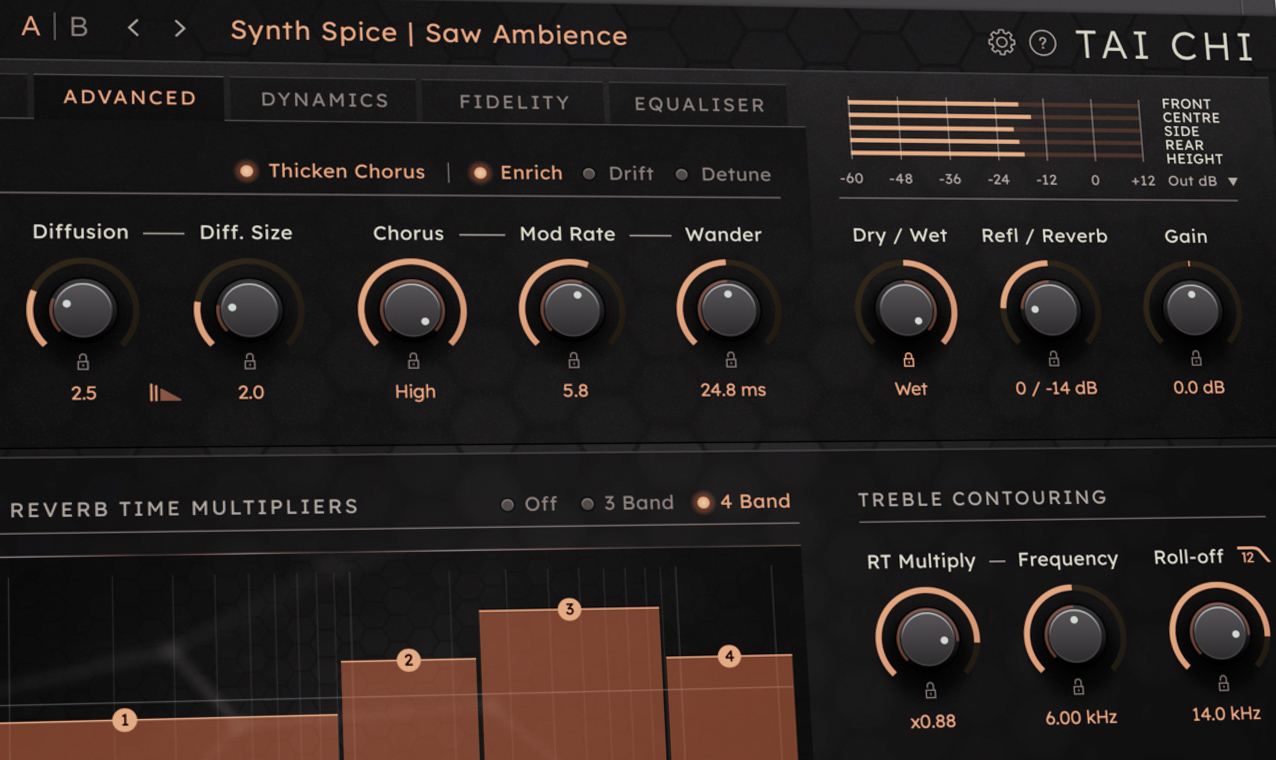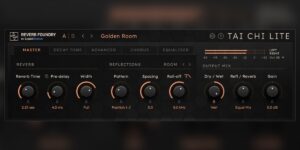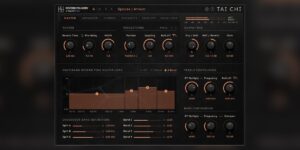
It is always good to have a handful of reverbs in your virtual rack that excel in different ways, and knowing which to lean into depending on what you need in the moment is an important part of learning the art of music production.
Reverbs can be coarsely grouped into two categories. Those that pursue realism without drawing unnecessary attention to themselves as they can trick the brain into believing in the space they are simulating without questioning it, while others are designed to be used as interesting effects to deliberately catch the ear or flatter the music in creative but often unnatural ways.
Examples of the first are reverbs like Cinematic Rooms, Seventh Heaven, or one of the many real-spaces sampled convolution reverbs like Altiverb. Creative effects reverbs like Tai Chi, Relab Sonsig or Valhalla Shimmer are great examples of reverbs that can be used as an intrinsic part of the sound design process when seeking to define a sound that incorporates reverb as a core component, or when you need a reverb that can dramatically widen and thicken sources like guitars, vocals and synths.
There are some clear subcategories of special effect reverbs. A shimmer incorporates pitch shifters into the reverb body so that the reverb’s pitch swims up and/or down as sounds make their way through the loops. The pitching is constant, continually rising and/or falling. There is usually also a lot of diffusion to smear/smooth the sound masking shifter artefacts at the expense of clarity giving a shimmer that characteristic dreamy sound. An ensemble reverb instead uses chorusing to thicken the sound throughout the body, the pitching is relatively fast in a cyclical motion (e.g. sinusoidal) never deviating very far from the base pitch. You will tend to find that ensemble reverbs are never quite as ‘pure’ as a reverb designed for realism, and likewise a realism-focused reverb such as Cinematic Rooms that also features choruses within the reverb body won’t ever quite reach the thickness of a dedicated ensemble reverb but will often be a little cleaner.
Chorusing was originally built into reverbs like the EMT 250 and Lexicon 224 as a means of breaking up resonances that could quickly build up in the relatively short delay line loops that typify early reverb designs. Often reverb designers were not particularly fond of this because it was not aligned with their goal of creating realistic and believable spaces (especially on sources like piano where the chorusing is very obvious). However quite often audio engineers found the qualities to be very desirable achieving results they could not with a standard chorus because of the way the chorusing can evolve and develop over time.
Perhaps surprisingly we have a lot more latitude to deliver thick chorusing techniques in reverbs than when designing choruses as dedicated effects. Slowly building up chorusing in reverb to a lusciously thick crescendo can be done in a way that would simply be too extreme if we tried to get to similar chorus depths with a traditional chorus module. A well decorrelated reverb with well synchronised in-loop choruses allows us to take more time to gently evolve the sound – the chorus can gently beat against the dry and crucially itself at different phases/depths over time creating wonderfully thick and rich tones.
Nowadays reverbs like Tai Chi can deliberately lean into chorusing heavily for creative purposes, adding numerous chorus touch points in very broad and long delay networks with carefully synchronised modulations to ensure a rich chorused tone. Modern computing platforms facilitate an abundance of modulation and delay loop reads allowing us to avoid ensemble reverbs pitching sharp or flat as sound is pushed and pulled back and forth in time at many (possibly hundreds) of points within the algorithm. Further, utilisation of modern techniques to rapidly build diffusion in allows us to avoid the use of heavy in-loop diffusion meaning we don’t compromise as much clarity as is the case in many older ensemble designs.
The take-away from this article is that an ensemble reverb is one that has a particular emphasis on chorusing, so if you ever need to enrich a guitar or electric piano try one of these. For synth fans reverbs and effects can thicken leads and pads without leaning into the same internal chorus module or unison feature every time meaning you can get some unique tonal qualities from the reverb itself.
Hear It For Yourself
Check out some audio demos below to hear how an ensemble reverb can transform backing vocals, electric and acoustic guitars.
Try Tai Chi Today
A 14-day Tai Chi trial is available so you can hear it for yourself, just head to our demos page to drop a code into your license manager and pick up the installers from the Tai Chi page.
If you’d like to own a copy of Tai Chi it is available for $199 in the store, or try Tai Chi Lite for just $99.
Existing customer can use their loyalty discounts for some incredible stackable savings.


